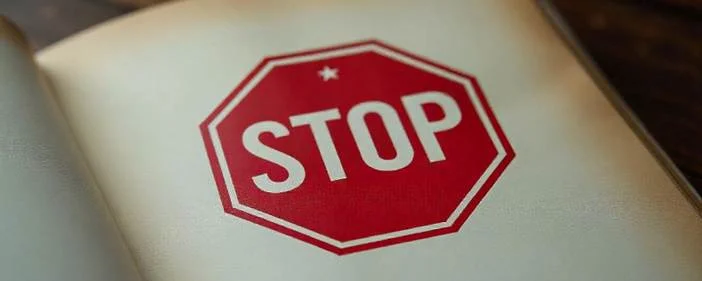
Tips/Advice Script Formatting Screenwriting ABCs
Ten (Perhaps) Surprising Words that Have no Place in Your Screenplay
by Vaughn Roste
Screenwriting Lesson, 3 pages
Viewed by: 45 Residents and 26 Guests
Ten (Perhaps) Surprising Words that Have no Place in Your Screenplay
By Vaughn Roste

If you’re writing a feature screenplay, you’ve only got 110 pages (more or less) to tell the entire story.
If you’re writing for television, it’s half or a quarter of that.
While novelists can bask in description - J.R.R. Tolkien can spend half a page describing a door - screenwriters have nowhere near that kind of luxury. Our goal is to be picturesque and efficient. Let’s assume that if the same idea can be conveyed in fewer words, therefore, that is an improvement. At least as far as screenwriting goes.
They say writing is rewriting, and much of screenplay writing is trimming. Producers are more interested in a 90-page horror than a 110-page horror. Execs are more likely to read your 104-page drama than your 123-page drama - it goes higher in the pile. So let’s excise from our screenplays all the unnecessary verbiage.
Without further ado, then, here is a list of ten words that should never appear in your screenplay. You can cut them out, without really affecting the story at all.
1. HI, HELLO, or HEY
OK, actors Joe Locke and Kit Connor in Heartstopper turned this word into an art form by itself, imbuing amazing subtext into the simplest of everyday exchanges - but on the whole, start scenes later and end them earlier. It’s too easy to have a scene begin with someone entering a room - greetings and pleasantries are exchanged, perhaps some small talk, this is the way of the world, people do it all the time, it is the normal way we start conversations in life - but readers are already thinking “get on with the point of it” just like you’re thinking that now about this sentence (and by extension, this article). What if we jumped right to the argument, or the pointed question, instead of beginning by boring our audiences? That’s one cardinal rule in screenwriting - never bore your audience. Say what needs to be said, and jump as quickly as possible to the next thing.
2. THAT
In English, the use of this word is often optional. E.g. “He forgot that he left the oven on” can equally be “He forgot he left the oven on.” This renders the word, in screenplay context, undesirable - because you can be understood without it. Sure, you can find instances that you need to use it in, but if you find that you’re using the word all the time, you might remember that if you remove it, it might help avoid an orphan later, and save a line. Save thirty lines in a screenplay and you’ve saved a page. In academic writing it may be necessary - in screenplays, likely not. Execs skim anyways. We get the gist.
3. WE SEE/WE HEAR
This assertion started no small amount of controversy on screenwriting Twitter just pre-strikes, and people have strong opinions about the efficacy of these words - but the point is best made by stating that every single sentence in the screenplay describes what we see and what we hear. No one commences their screenplay with WE FADE IN. “We” is assumed in every single sentence already. Further, “we” are not there - more pointedly, “we” should not be the active agent in any sentence in your script. Ideally, your protagonist or antagonist is the one doing something, not us. Make them the active agent. There is no need for “We see John cross the street in the background” - simplify this to “John crosses the street in the background.” Make John the person doing the thing, not me.
4. THIS IS
This is (this was) a way too-common way to introduce characters. I can’t say who did it first, but I can confidently state that while it was cute and whimsical and full of voice the first time it was done 50 years ago, it is now overused and outdated. E.g. “This is SARAH CONNOR, John’s badass mom” - can just be simply “SARAH CONNOR, John’s badass mom, cocks her rifle” Save these two words in character introductions, they’re unnecessary. Give her a thing to do when we meet her, rather than just “be.” And for heaven’s sake don’t use them every time you introduce a new person. Once maybe - three times yawn. Every time? Pass. Find original ways to introduce every major character - something for them to be doing which is revelatory of their personality or mood. “Anxiously chews his nails” is better than “This is Joe.”
5. FADE IN/CUT TO
Just as CUT TO is now viewed as entirely unnecessary between scenes, it’s also now considered unnecessary to begin your screenplay with FADE IN. Despite long standing tradition, this is no longer best practice. Just dive into the first slugline and save yourself two lines.
6. WALKS/SITS/TALKS
Admittedly, these are the most common things modern humans do in a given day - and there’s hardly a script written where characters don’t do these things at some point or another. That still doesn’t mean these words need to appear in your script. Sure, once won’t kill ya - but 30 times will. The English language is infinitely variable - walk, for example, has literally 100 synonyms in the thesaurus - all of which are more picturesque than the bland “walks.” Consider the different imagery offered by trudges, strolls, saunters, sashays, waddles, marches, skips, strides, stumbles, tiptoes, trots, flits, slides, crawls… I can’t list them all. Use a thesaurus as you need to, but part of being a writer is a mastery of the language - so don’t be basic. Be picturesque. Paint a picture with a single word. Don’t have your characters walk, have them hobble, strut, inch, or race. Same thing with sits - instead they slump, perch, or collapse. Use a thesaurus if you need to.
7. BEGINS TO/COMMENCES TO/STARTS TO/CONTINUES TO
In most cases, omitting these words doesn’t change the meaning of the sentence - it just saves space. Sarah doesn’t begin to drive away, she just drives away. Do a search - and if you’re using these words, see if you can’t remove them.
8. BEAT
I can see the protests already: “but I see this word in scripts all the time!” Still doesn’t mean you should. “Beat” is more commonly used in scripts destined for the stage - and yes, there are many screenplays which still use this word - but its use is falling rapidly out of fashion. Screenwriting gurus like Trottier would say that word is the most colorless, lifeless word one can possibly use to indicate the passage of time. Why not give the speaker something to do during that time? Let them check their watch, twirl their hair, tap their toes impatiently, lick their lips lecherously, or pace. Each time the word “beat” is used, an opportunity for the speaker to do something revelatory of their character or current mood is lost. Give your actors something more interesting to do than “wait.”
9. THINKS/FEELS/PONDERS/REMEMBERS/REMINISCES
Screenplays need to describe what we see and hear - and even actors have a hard time interpreting how to behave when a script reads that they think or feel a certain way. How do we do what a given character is remembering? (If it’s in a flashback, great - new slugline and describe that). The question becomes “what do we see on screen while the character ponders?” Instead, the script needs to detail what we do see on screen - are they wringing their hands? Pacing? Checking their watch every five seconds? Give your actors something more active to do than “think.”
10. REITERATING THE SLUGLINE
If we read INT. KITCHEN - DAY, the first sentence of the scene does not need to repeat where we are. “Sam enters the kitchen” can really just be “Sam enters.” (but that sounds dull - what is Sam doing as he enters? Tripping? Jumping? Yelling? Sam storms in sounds better to me.)
NOW, time to get to work!
Doing a search for these word combos doesn’t take too long. In the end it’s your script, and you have to make these decisions - but I hope something I wrote in this article you find helpful - and I hope on your next coverage or contest entry you do even better than you did before.
Good luck with the next rewrite!
----------------
About Vaughn Roste
A former university professor, Vaughn Roste is a represented, optioned, and produced screenwriter. He's been writing coverage for five years for various screenplay competitions as well as coverage services Script Studio, Coverage Ink, and Roadmap Writers.
Vaughn is also one of our Professional Story Analysts here at Talentville.




